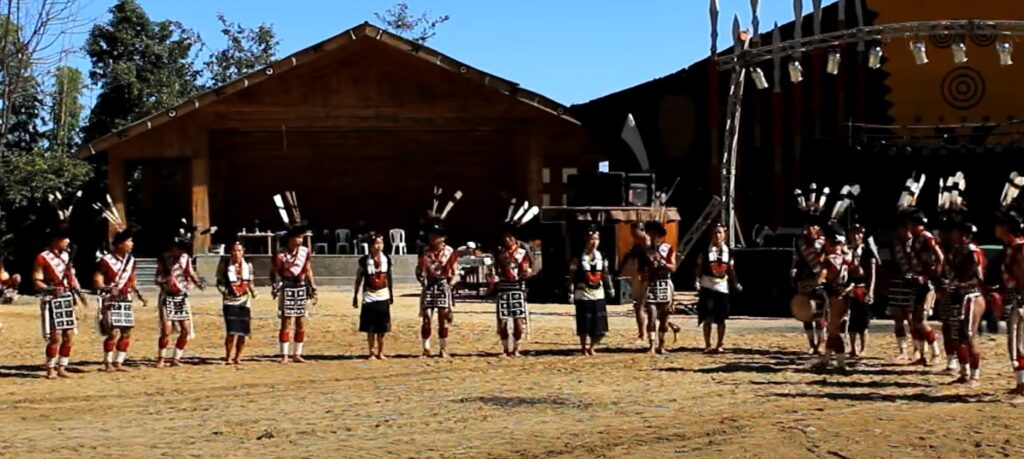The tribes of Nagaland are mostly war tribes. Weapons and warfares tactics are an important part of their culture even in the present day. Multiple festivals, songs, and dances are representative of the life of warriors. One such traditional dance is the Rangma dance performed by the Naga people. It is usually a part of the Ngada festival.

Rangma Dance performance
The Rangma dance depicts the war culture. The dancers dress up like warriors and move in a rhythmic style with the beats of a drum. The dance is a highly energetic one and is performed by the male folk of the tribe. Recently, few women also take part.
The dancers form a semicircle and the man playing the drum stand in the centre. There is a leader who stands at one end of the arc formed and he leads the group as the music begins. In the beginning, the drum beats are soft and slow.
The dancers stand in one position and make slow movements with their feet. The men hold a spear in their right hands. Then the drumbeat intensifies and the dancers start to move in the circle. With one beat they raise their right legs, the next two beats they swing the leg and on the last beat they put back the right foot on the ground with some force. Then all of them move forward together. They also hit the ground with their spearheads, which is synced with the drum beats.
After moving in a line for some distance, the group splits into two and start moving in opposite directions in a circle. As the two groups meet, one group enters the inner circle and now they form two arcs, one behind the other.
The movement continues for a while and then the two groups merge into one arc formation. Again the beats slow down and the steps become soft. Now the leader moves out of the circle and goes to the centre, while the dancers move on one spot. He again joins the group, and the entire process repeats.
Dance Costume
The men dress up like warriors. A broad piece of cloth is wrapped around the chest. It goes over both shoulders and forms a cross in the front. From the waist, they attach an embroidered piece of cloth that covers the front up to the knees, while the back remains exposed. A tuft of the feather is attached in the back that represents the tail of a horse. On the head, they wear gear tucked with multiple feathers.
They wear metal jewelry in the ears and bead necklaces. On the arms, they tie golden bands, and on the legs, they wear red and white bands. The colorful costume enhances the performance and keeps the audience entertained throughout.

Pingback: Dance of Nagaland - Auchitya
Pingback: Naga Dance - War Dances Celebrated by Tribes of Nagaland - Auchitya